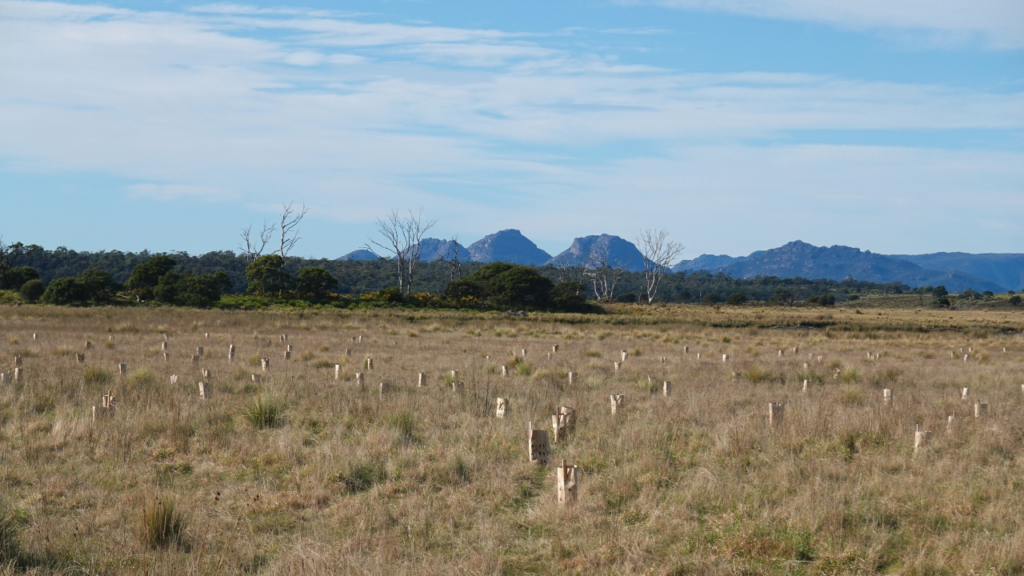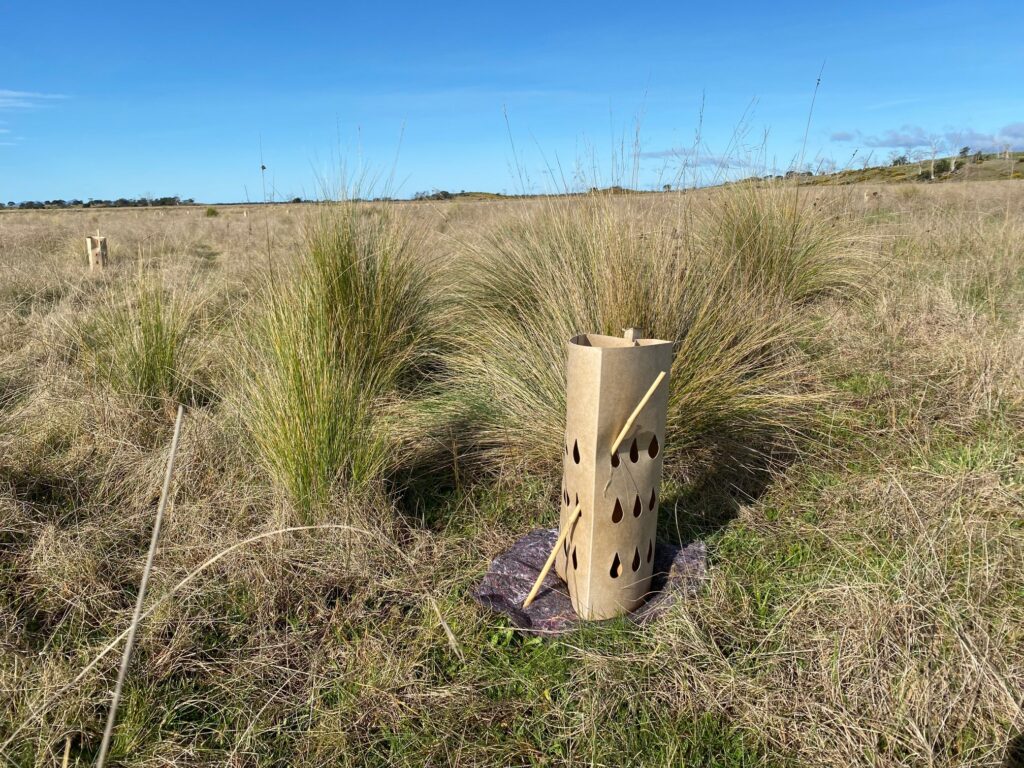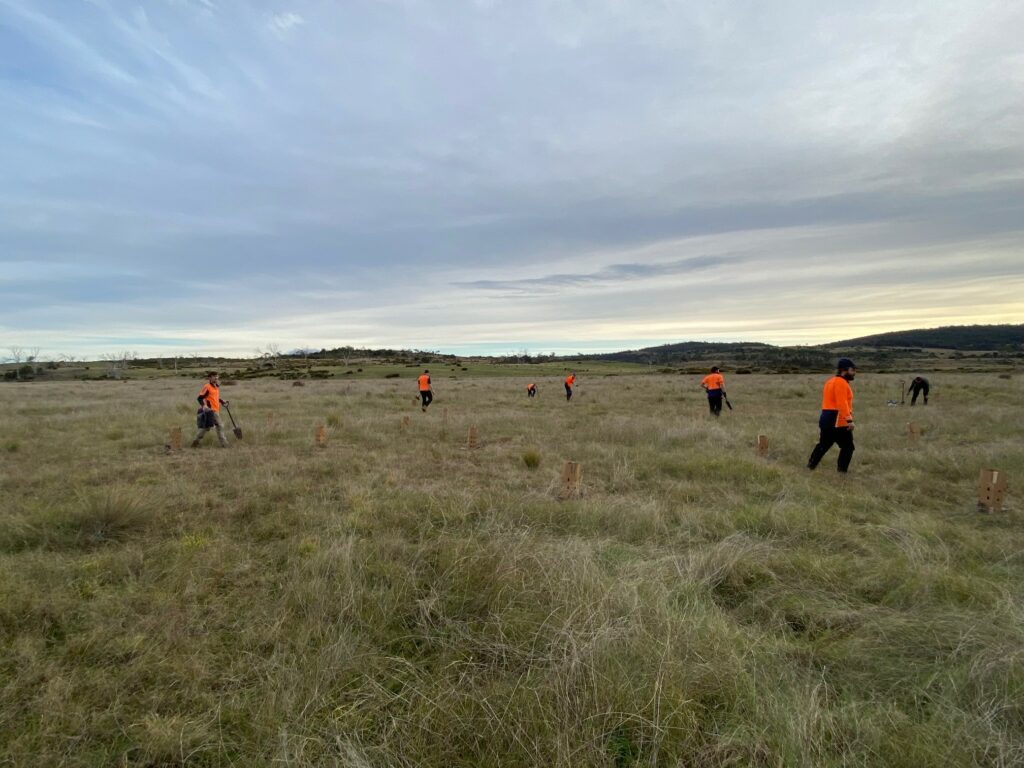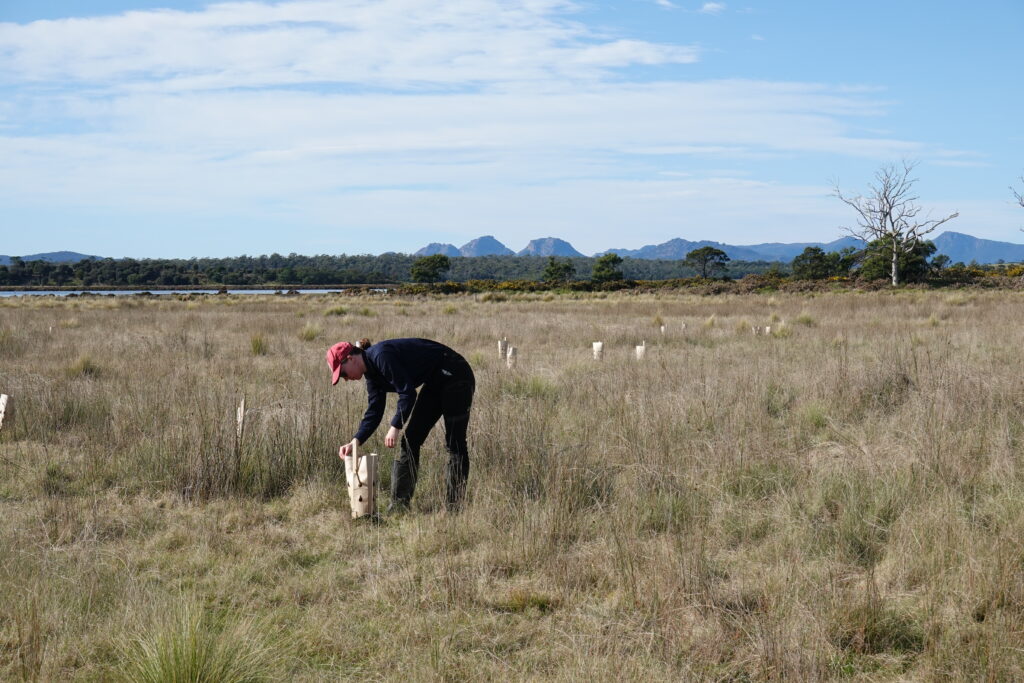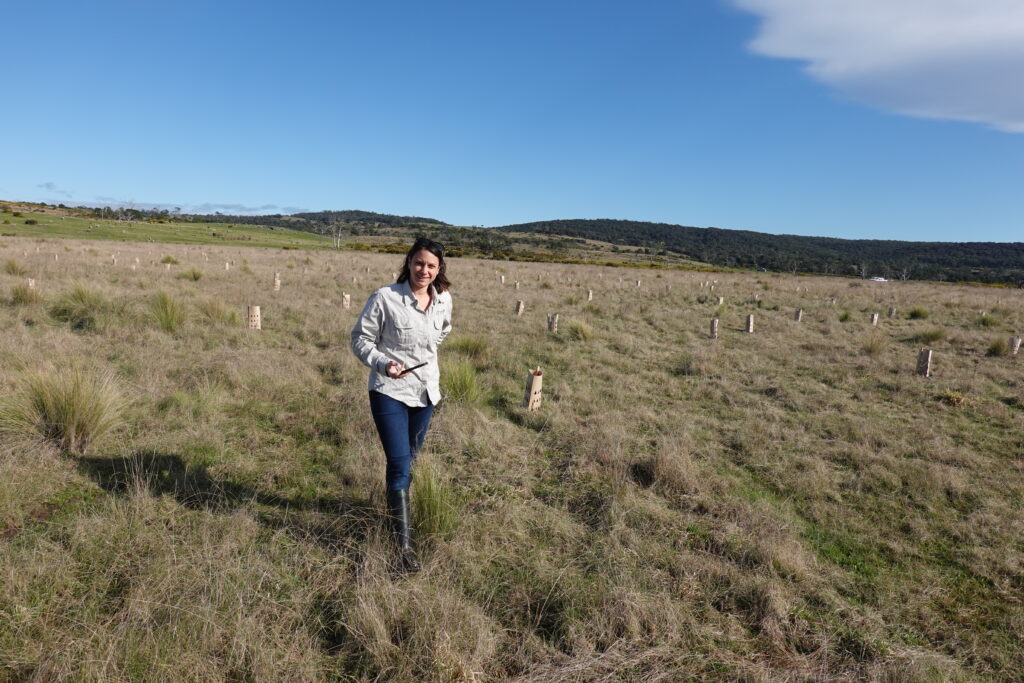Twenty hectares of revegetation work has been undertaken at two private properties adjacent to the internationally significant Moulting Lagoon on Tasmania’s east coast. This restoration work is helping to address historical vegetation clearing across private land surrounding the wetland. Revegetation of native habitat will provide a buffer between this important wetland and surrounding agricultural land; and will stabilise soils, reduce erosion and mitigate the impact of sediment loads on Moulting Lagoon.
In 2022 we supported the Tasmanian Land Conservancy to undertake 11 ha of in-fill canopy planting using native vegetation. The planting was undertaken across two areas on Long Point Reserve. On Long Point proper, TLC revegetated with White Gum (Eucalyptus viminalis) to re-establish its canopy through the current Bursaria-Acacia woodland. At Barkstand Point, TLC extended the areas of Bursaria-Acacia woodland to provide additional habitat for threatened fauna, including Tasmanian devils and Spotted-tailed quolls.
On an adjacent private property, we worked with Technical Forest Services to revegetate 9 ha with diverse tree, shrub and ground cover species. This will increase connectivity with an existing stand of Blue Gum (Eucalyptus globulus); bolster declining sedge numbers in the understory and provide shelter, shade, food and a wildlife corridor for native animals.
This work complements the extensive restoration efforts that we have supported over the last two years, including the removal of livestock grazing and vehicle access to 595 ha, 677 ha of gorse control and remediating 3.5 ha of modified drainage, which will restore natural hydrology to approximately 34 ha of existing and potential saltmarsh.
For more information on this project, visit https://nrmsouth.org.au/important-wetlands/
This project is supported by NRM South, through funding from the Australian Government’s National Landcare Program.
